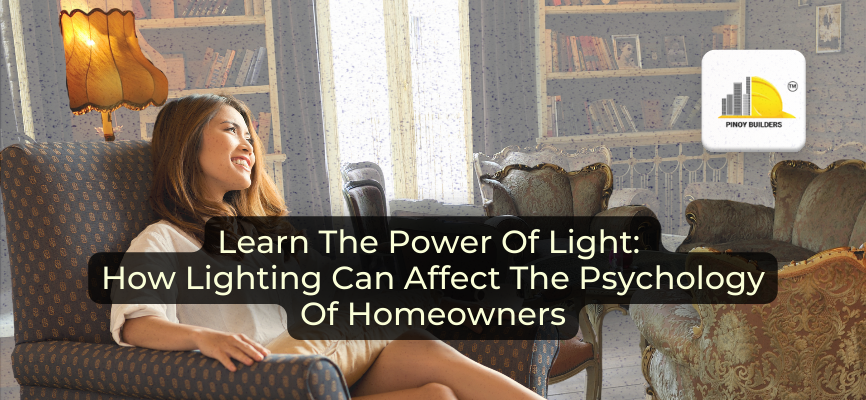Did you know that lighting can significantly impact your mood and overall well-being? The way we light our homes not only affects how we see our space but also how we feel within it. This article delves into the fascinating intersection of lighting and psychology, emphasizing the importance of choosing the right lighting to enhance mood and aesthetics in the home.

The Psychological Impact of Light
Lighting plays a crucial role in shaping our emotions and perceptions. Different types of lighting can evoke various emotions and create distinct atmospheres.
- Mood Enhancement – The type of lighting you choose can drastically alter your mood. Warm lighting, with its yellowish hue, is known to create a cozy, relaxing environment, perfect for winding down in the evening. On the other hand, cool lighting, which emits a bluish tone, is ideal for areas where concentration and alertness are needed, such as home offices or study areas.
- Aesthetic Influence – Lighting also significantly influences how we perceive space and decor. Ambient lighting, which provides overall illumination, can make a room feel inviting and spacious. In contrast, task lighting focuses on specific areas, such as kitchen countertops or reading nooks, enhancing functionality. Accent lighting, used to highlight architectural features or artwork, adds depth and character to your home.
- Feelings and Well-being – Natural light plays an essential role in our well-being, regulating our circadian rhythms and boosting our mood and energy levels. Exposure to sunlight can increase serotonin levels, leading to improved mood and a sense of calm. Conversely, soft, artificial lighting in the evening can help us relax and prepare for sleep, promoting overall well-being.
How To Choose the Right Lighting for Your Home
To create a harmonious and functional living space, it’s crucial to understand the different types of lighting and their purposes.
Types of Lighting

- Ambient Lighting: Provides general illumination for a room, creating a uniform light level. Ideal for overall visibility and comfort.
- Task Lighting: Focuses on specific areas where activities like reading, cooking, or working take place. It enhances productivity and precision.
- Accent Lighting: Adds drama and highlights architectural features, artwork, or decor elements, enhancing the visual interest of a space.
Mood-specific Lighting Tips

- Relaxation: Use warm, dimmable lights in living rooms and bedrooms to create a soothing atmosphere.
- Productivity: Bright, cool lights in home offices and kitchens boost concentration and efficiency.
- Entertainment: Dynamic, colorful lighting can transform game rooms or home theaters into vibrant and exciting spaces.
Aesthetic Goals
Strategically using lighting can highlight architectural features or decor, creating a visually appealing environment. Balancing different light layers—ambient, task, and accent—helps achieve a cohesive and harmonious look in your home.
DIY Tips
Imagine a homeowner who transformed their living room into a cozy retreat by incorporating warm ambient lighting, complemented by task lighting for reading areas and accent lighting to highlight the artwork. This layered lighting approach created a multifunctional space that caters to relaxation and leisure.
Start by assessing your current lighting setup and identify areas that need improvement.
- Experiment with different light bulbs and fixtures to see how they change the ambiance of your space.
- Consider affordable solutions like smart bulbs, which allow you to adjust the color and intensity of light to suit different moods and activities.
Light Up Your Home
The right lighting can profoundly impact your mood, aesthetics, and overall well-being. By experimenting with different lighting setups and understanding their psychological effects, you can create a comfortable and inviting home environment that caters to your needs. So, go ahead and explore the power of light in transforming your living space!








